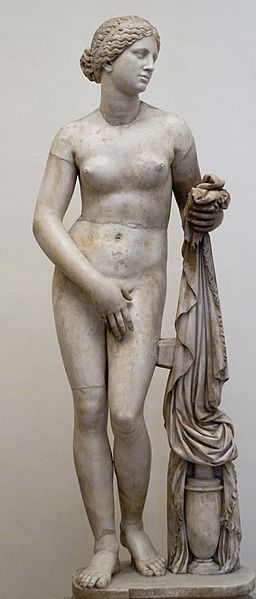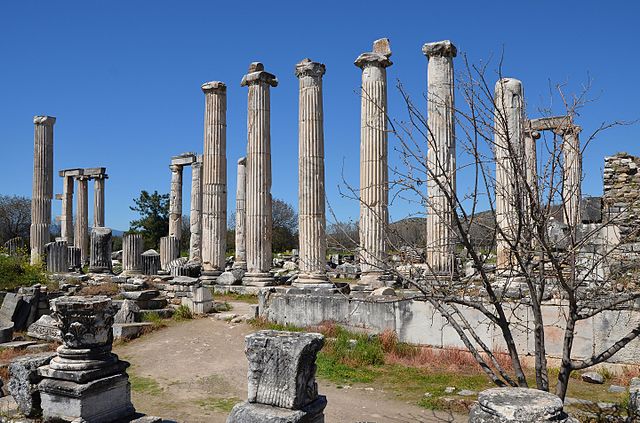Aphrodite Areia or "Aphrodite the Warlike" was a cult epithet of the Greek goddess Aphrodite, in which she was depicted in full armor like the war god Ares. This representation was found in Sparta and Taras. There were other, similarly martial interpretations of the goddess, such as at her Sanctuary at Kythira, where she was worshiped under the epithet Aphrodite Urania, who was also represented as being armed. The epithet "Areia", meaning "warlike", was applied to other gods in addition to Aphrodite, such as Athena, Zeus, and possibly Hermes.
A Roman copy of a statue of Aphrodite Areia found in Epidaurus, with the original created by the Polykleitos school.
Aphrodite in Cyprus Museum.
Aphrodite is an ancient Greek goddess associated with love, lust, beauty, pleasure, passion, procreation, and as her syncretized Roman goddess counterpart Venus, desire, sex, fertility, prosperity, and victory. Aphrodite's major symbols include seashells, myrtles, roses, doves, sparrows, and swans. The cult of Aphrodite was largely derived from that of the Phoenician goddess Astarte, a cognate of the East Semitic goddess Ishtar, whose cult was based on the Sumerian cult of Inanna. Aphrodite's main cult centers were Cythera, Cyprus, Corinth, and Athens. Her main festival was the Aphrodisia, which was celebrated annually in midsummer. In Laconia, Aphrodite was worshipped as a warrior goddess. She was also the patron goddess of prostitutes, an association which led early scholars to propose the concept of "sacred prostitution" in Greco-Roman culture, an idea which is now generally seen as erroneous.

The Ludovisi Cnidian Aphrodite, Roman marble copy (torso and thighs) with restored head, arms, legs and drapery support
Early fifth-century BC statue of Aphrodite from Cyprus, showing her wearing a cylinder crown and holding a dove
Aphrodite Ourania, draped rather than nude, with her foot resting on a tortoise (Louvre)
Ruins of the temple of Aphrodite at Aphrodisias






